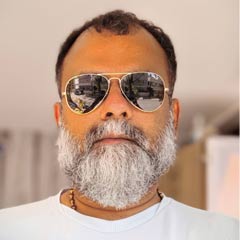Bengaluru: Naval aviation in India scripted an inspiring chapter on Friday with the first ever arrested landing of Light Combat Aircraft (LCA).
Arrested landing deploys a cable on the carrier while the aircraft is about to land. While landing the aircraft will deploy an arrester hook, which in turn will get attached to the cable. This will arrest or bring the aircraft to a halt.
Friday’s development will now steadily pave the way for this desi platform to undertake aircraft carrier landing demonstration on board the INS Vikramaditya.
It has also put India on the world map as a nation with the capability to design a deck-landing aircraft.

According to sources, NP-1 (Naval Prototype), a trainer, did the first arrested landing at the shore-based test facility (SBTF) situated at INS Hansa in Goa.
The SBTF replicates a static model of the Indigenous Aircraft Carrier (IAC) being built at the Cochin Shipyard in Kerala.
“Today’s milestone comes after several years of flight testing and four campaigns of dedicated testing at SBTF. It was a text-book landing,” says an official who was part of the Goa campaign.

The NP-1 was piloted by Cmde J A Maolankar (Chief Test Pilot) with assistance from Capt Shivnath Dahiya (Landing Safety Officer) and Cdr J D Raturi (Test Director).
“The arrested landing heralds the arrival of true indigenous capability and displays the professional prowess of our scientific community. Aeronautical Development Agency, along with design, build capabilities of HAL, DRDO and CSIR labs have played a big role in executing today’s landmark event,” says an official.
Sources confirm that the landing speed of NP-1 was at 132 knots and the sink rate at 4.4 m/s while the arrester hook load was about 37 tonnes.

The arrestor hook and other systems were developed by Aircraft Research and Design Centre (ARDC), a division of HAL.
“All systems performed as expected during the arrested landing," says an official.
LCA Navy Mk1, which is being jointly developed by HAL and ADA is derived from LCA Air Force version with Navy-specific features incorporated.
Main features include drooped nose for better vision, strengthened fuselage, redesigned landing gear to cater for higher sink rate landing, Leading Edge Vortex Controller (LEVCON) for reducing the approach/landing speeds during deck recovery and an arrester hook system (AHS) capable of bringing the aircraft to a halt on deck.
ADA Director Dr Girish S Deodhare was present during the trials.
The Indian Navy team has been closely monitoring the progress of NLCA project. Multiple agencies have been working for this technological breakthrough in the last few years.
It was in December 2014 that the NPI-1 had its maiden take-off from SBTF, thereby becoming the first home-grown naval jet to do so.
The Naval LCA project missed many a deadline owing to multiple technological bottlenecks since its roll out on July 6 2010.
It had its first flight in April 2012 and after the SBTF was set up, it undertook several trials in Goa.
The Indian Navy minced no words in letting ADA-HAL combine know that this wasn’t the plane they wanted few years back.
With the virtual naval rejection, it was late defence minister Manohar Parrikar who stepped in to steer the revival of the project.
So far Russia, United States, France, United Kingdom and China are the nations who have mastered the art of an arrested landing, on the deck of a carrier.
(The writer is an independent aerospace and defence journalist, who blogs at Tarmak007 and tweets @writetake.)















